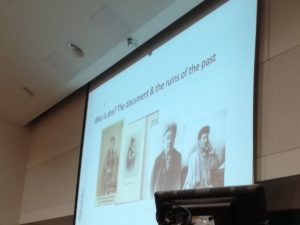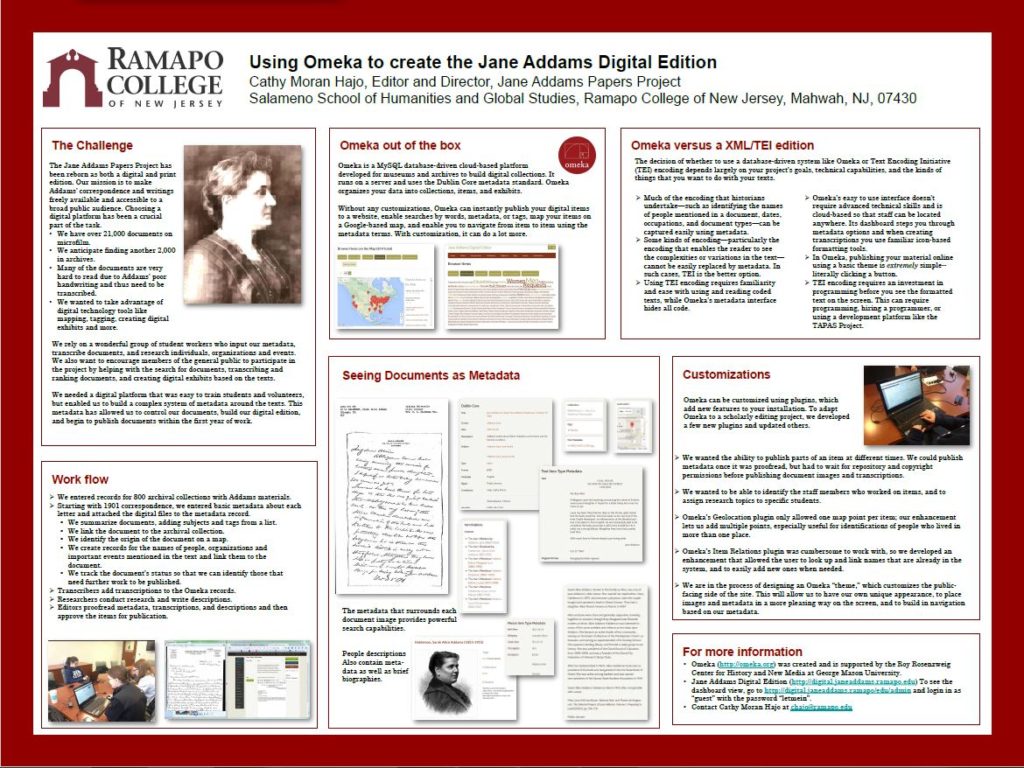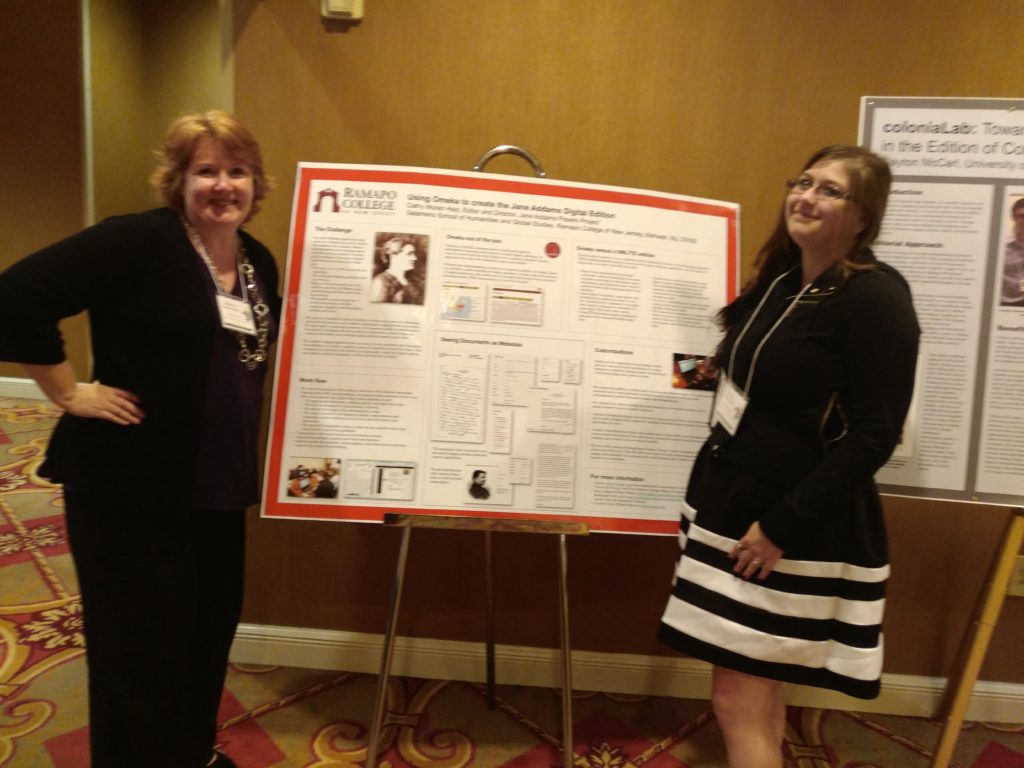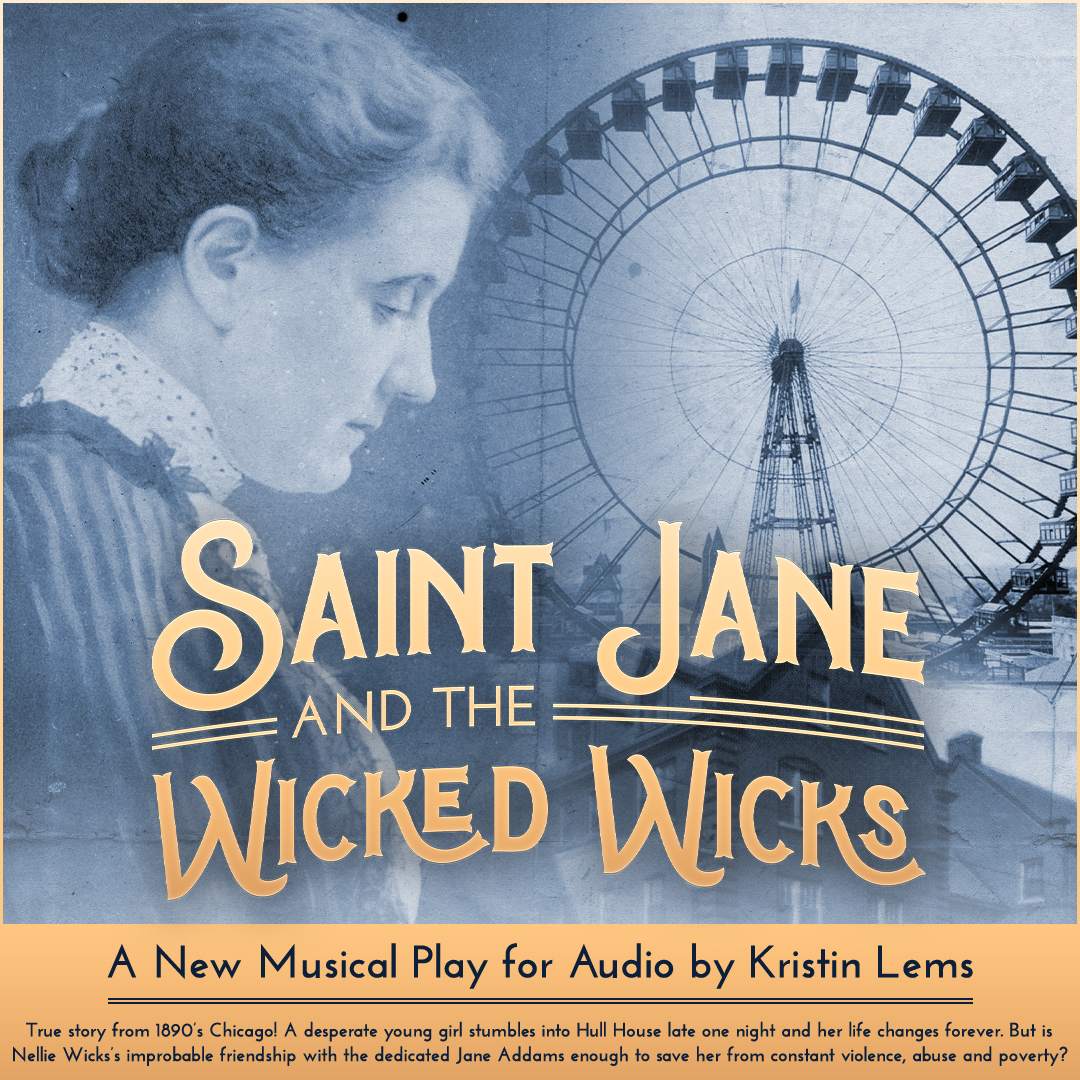 Exciting news! On Thursday, August 26 at 8 pm CST, Saint Jane and the Wicked Wicks, an audio musical written and composed by Evanston playwright Kristin Lems, will open to the public at the website www.SaintJanePlay.com. The two-hour musical play, which can be enjoyed in one sitting or in four separate installments, is free, asking for a voluntary donation with a suggested sliding scale. After the site goes live, listeners may attend the show any time on demand.
Exciting news! On Thursday, August 26 at 8 pm CST, Saint Jane and the Wicked Wicks, an audio musical written and composed by Evanston playwright Kristin Lems, will open to the public at the website www.SaintJanePlay.com. The two-hour musical play, which can be enjoyed in one sitting or in four separate installments, is free, asking for a voluntary donation with a suggested sliding scale. After the site goes live, listeners may attend the show any time on demand.
Saint Jane and the Wicked Wicks is set in Chicago in the decade of the 1893 World’s Fair. It is about the friendship between Hull House founder Jane Addams and Nellie Wicks, Kristin’s great grandmother, in the years 1890-1905, during the early years of Hull House.
Prize-winning Chicago dramatist Douglas Post is the director, with musical direction by Diana Lawrence and mixing and editing by Dan Dietrich. Piano arrangements and performances were created by Tom Cortese of Champaign, Illinois.
The cast consists of well-known area actors and singers, including Kathy Cowan as Jane Addams, Rebecca Keeshin as Nellie Wicks, Monica Szaflik as Ellen Gates Starr, Maddie Sachs as Julia Lathrop, Patrick Byrnes as George Wicks and John Dewey, Frankie Leo Bennett as Gene Wicks, John B. Leen as Jim Wicks and Sol Friedman, Kingsley Day as Richard Crane, and Therese Harrold as Addie Wicks. The professional, non-equity cast was auditioned and selected in December 2020 and recorded in the early months of 2021.
The “audio musical” is a new genre. The singer-actors rehearse their parts together on zoom, but record and upload them individually to a single destination without being in a recording studio. Then, the scenes and songs are reviewed, mixed, and edited by the director and recording engineer. The final product is similar to an audiobook or radio play, but there are also songs, in this case, 17 original songs including “The Hull House Rag,” “Straight to Hell in Chicago,” and other memorable numbers. The new genre enables artists to release entertaining musical theatre work while keeping both performers and audience safe.
The musical will open on Women’s Equality Day, August 26, to celebrate the 101st anniversary of American women winning the right to vote. Jane Addams was active in the suffrage movement 10 years after the time of the play, along with many activist women of Hull House. Two key organizers, Ellen Gates Starr and Julia Lathrop, are characters with key roles in the show.
Kristin Lems has won many accolades as a writer, composer, and performing artist, but this is her first full-length musical. Lems was inspired by stories about the unusual friendship between the two women, told by her mother, musician Carol Lems-Dworkin (1924-2019), and along with primary materials, including a handwritten diary by Nellie Wicks, two full length unpublished novels written by Nellie’s eldest daughters, recorded oral histories, and an autographed picture given to Nellie by Jane Addams shortly before Addams died. Lems also researched Jane Addams, Hull House, and Chicago history with a 2017 sabbatical from her employer, National Louis University, where she is a professor.
Many other outstanding talents helped design the trailer, iconic poster, website, video product, and script, and many people deserve thanks and praise for moving this ambitious project forward to this day. For information about the cast, members of the pre-production, production, or post-production team, or to contact Kristin Lems, please email saintjane2021@gmail.com.
Cathy Moran Hajo is the Editor and Director of the Jane Addams Papers Project at Ramapo College of New Jersey. She is an experienced scholarly editor, having previously worked for over 25 years as Associate Editor at the Margaret Sanger Papers at New York University. Dr. Hajo received her Ph.D. in history from New York University in 2006, and is addition to her work on the Sanger Papers, published “Birth Control on Main Street, Organizing Clinics in the United States, 1916-1940,” in 2010.
Her teaching interests include scholarly editing and digital history, and she currently teaches for the Institute for Editing Historical Documents, the Digital Humanities Summer Institute. She teaches a digital history course at Ramapo College.



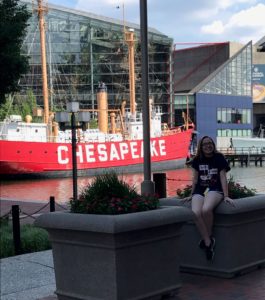

 Cathy led off the panel talking about the “Big Picture: Conceiving a Digital Edition of Jane Addams’ Papers,” providing a short history of the Addams Papers microfilm and book projects, and the process that went into deciding to digitize the microfilm edition. The decisions to be made involved thinking through the audience for the edition and what kinds of tools and resources they needed. In addition, Cathy discussed the decision to use the Omeka database-driven platform for the digital edition rather than using text encoding using XML. Going with a web-publishing friendly system allowed the Addams Papers to design a site that not only provides deep metadata, but also manages the project’s internal workflow, tracking information on each document as it passes through our permissions and copyright checks, metadata and transcription, and proofreading. Cathy also talked about her desire to see the Addams Papers edition be flexible enough that scholars and students can use its materials to build their own research projects.
Cathy led off the panel talking about the “Big Picture: Conceiving a Digital Edition of Jane Addams’ Papers,” providing a short history of the Addams Papers microfilm and book projects, and the process that went into deciding to digitize the microfilm edition. The decisions to be made involved thinking through the audience for the edition and what kinds of tools and resources they needed. In addition, Cathy discussed the decision to use the Omeka database-driven platform for the digital edition rather than using text encoding using XML. Going with a web-publishing friendly system allowed the Addams Papers to design a site that not only provides deep metadata, but also manages the project’s internal workflow, tracking information on each document as it passes through our permissions and copyright checks, metadata and transcription, and proofreading. Cathy also talked about her desire to see the Addams Papers edition be flexible enough that scholars and students can use its materials to build their own research projects.

